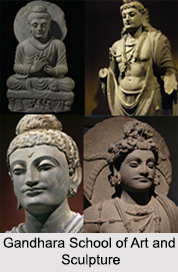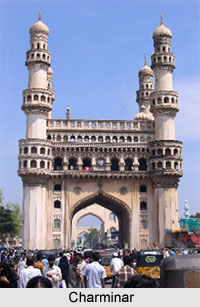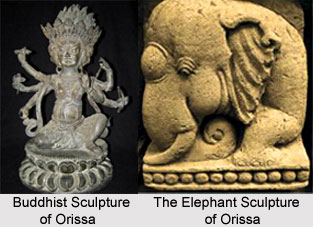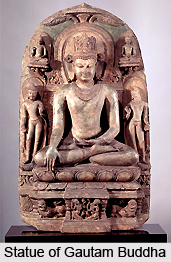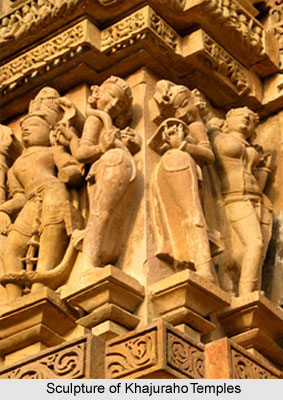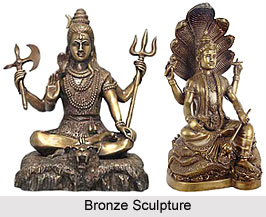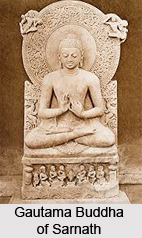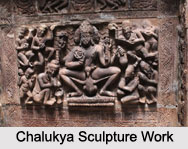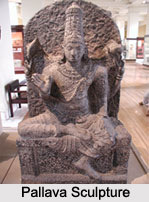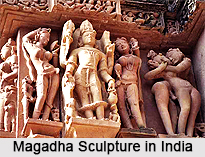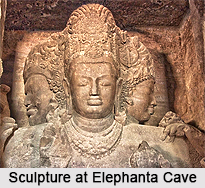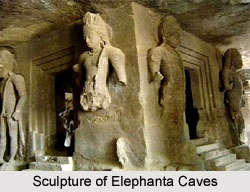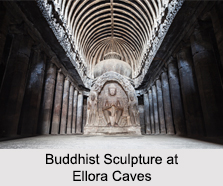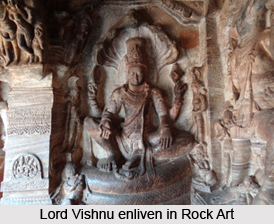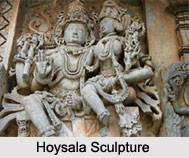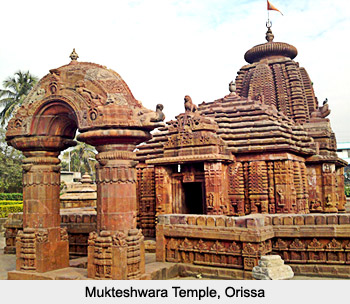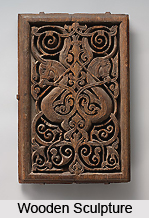 Indian wooden sculpture has marked its presence since ancient times and has been the testament of artistic brilliance. Every region of India had developed its own unique style of wooden structures, marked with a distinct type of carving, strongly influenced by local traditions and the materials that were locally available. From the southern parts of India, the wooden sculptures and toys are popular for their intricate carving works and meticulous finishing. In Indian wood sculpture, idols of god, goddesses and demigods are the most preferred themes.
Indian wooden sculpture has marked its presence since ancient times and has been the testament of artistic brilliance. Every region of India had developed its own unique style of wooden structures, marked with a distinct type of carving, strongly influenced by local traditions and the materials that were locally available. From the southern parts of India, the wooden sculptures and toys are popular for their intricate carving works and meticulous finishing. In Indian wood sculpture, idols of god, goddesses and demigods are the most preferred themes.
Features of Indian Wooden Sculpture
Many specialized techniques of carving in variety of ways on wood were seen in India. Among it sandalwood carving is considered as one of the most important. Originally, the deities-Shiva (in the form of Nataraj), Vishnu, Devi, Ganesha, Kartikaya and others were created in sandalwood. Apart from the regular natural finish the sculptures are also available in a variety of vibrant colours. Throughout the history of Indian art, the well-known example of wooden sculpture can be said as carved on temples and these were decorated with doors, ceilings and various fittings carved in teak and other kind of woods.
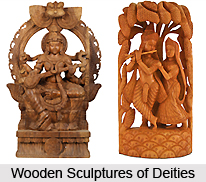 Wooden Sculpture of Central India
Wooden Sculpture of Central India
The relief sculptures from the great stupa at Bharhut are the earliest example of this art. It is in central India and constructed dating back approximately in the middle of the 2nd century BC. The wooden sculpture here can be characterized by designs that are essentially in cubical forms, where the flat planes marked in it that meet at sharp angles, and has an elaborate and precisely detailed ornamentation of surfaces. Most of the artistic part of sculpture is confined to the railing of the stupa. And the supporting posts are bearing large image of yaksas and yaksis, shown as providing the service to Buddha. Most of the others are decorated with medallions in the centre and at the top and bottom crescent-shaped motifs is seen filled with lotus motifs. On this stupa, figures are often carved parallel to each other in horizontal rows. All figures are like a series of continuous narration, in which happenings or small events succeeding in time are shown. Bharhut marked a new beginning after the dominating refined and naturalistic art of the Maurya Empire.
A style that is closely connected with Bharhut style is also found at Sanchi. Though the themes and motifs found at Bharhut occur here also, figures in narrative representations are found absent. In fact, the style is much identical in terms of designs and proportions.
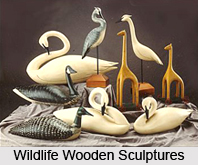 Wooden Sculpture of East India
Wooden Sculpture of East India
Assam wood carving is also prominent. The namghars, which are also the sacred worship places of people, were constructed from wood. There were also different carvings of the animal figures in the mythological context such as the half-man and half-eagle garuda, the vahana of Vishnu, and the loyal Hanuman the monkey-god, magar means crocodile, the vahana of Ganga, the simha or the lion, the vahana of Devi, were widely placed in the wooden sculpture. Besides these, in large numbers, the carvers also created a simhasana, lion"s seat, on which the celestial images from sculpture were seated.
Almost all architecture including a door, column, gallery or even a whole house-front is covered with the most intricate design at Bhera in Shahpur. In this architecture, only a simple enrichment carved around the framing or round designs were used on large extent to produce the artistic impact.
Wooden Sculpture of South India
Karnataka, Tamil Nadu and Andhra Pradesh and Kerala also present great examples of wooden sculpture. In these southern states, the Kerala wood carving architecture was best expressed in the form of rathas, which were carved skilfully in wood. The large rathas are miniature temples on wheels, which depicted gods and goddesses and mythological tales carved on the panels on these rathas. In south Karnataka, one can find the life-size, woodcarving of the Bhuta figures, made from single wood pieces and have a strong primitive character. Large pillar-like forms carved in wood representing various deities also surround the temples in the midst of the forest. Andhra Pradesh has a tradition of manufacturing woodcarving for religious centres and the Tirupati dolls of red wood were made primarily for sale to pilgrims. In Kerala the temples with carved pilasters, pillars and beams are seen. Almost every house from this state has a carved family temple, where these temples employ intricate patters for designs on the ceilings, pillars or in brackets. So, the carvings on temples had preserved the woodcarving style of sculpturing in Kerala.
Wooden Sculpture of North India
In Kashmir, a distinctive tradition of Central Asian designs is found, whereby the wooden mosques and places of pilgrimage, maintain the rich woodcarving and woodturning tradition. The religious places are lined with wood and the ceilings of these monuments are worked in geometrical patterns and latticework windows made up of pieces of wood locally known as pinjara, (cage work), which is a work of intricate patterns that is also the specialty of the area.
The old havelis and palaces of Punjab have carved doors and windows. However, these days, the wood carving tradition is very famous and the former wood inlay technique is specialized only in Hoshiarpur, where the intricate designs are primarily based on floral motifs. This is a result of a continuation of the Mughal tradition of decorative designs.
Wooden Sculpture of Western India
From the western coast, the temple of Somnath is famous for its beautiful wooden sculpture. The doors of this temple are famed for their magnificence and are highly valued as sacred relics.




